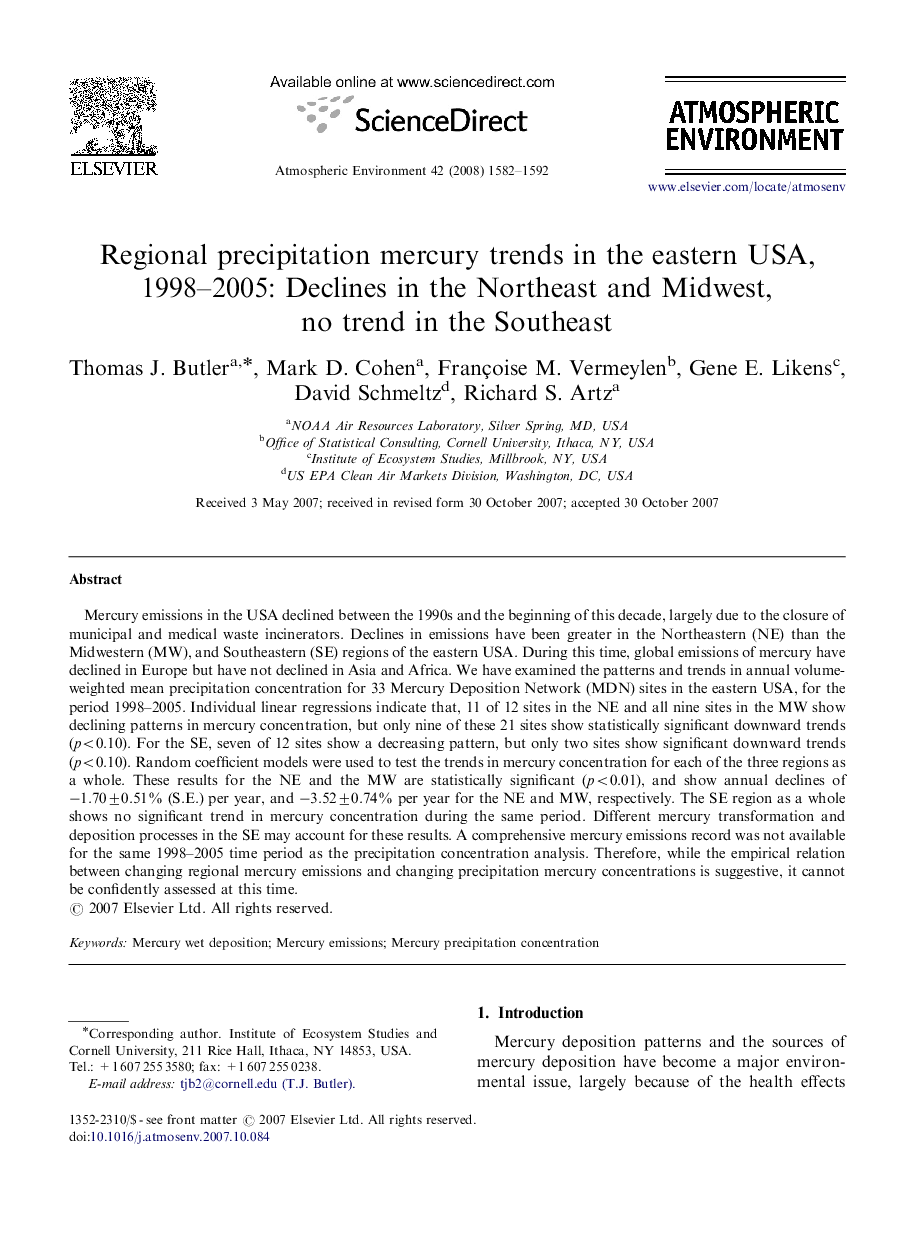| Article ID | Journal | Published Year | Pages | File Type |
|---|---|---|---|---|
| 4442221 | Atmospheric Environment | 2008 | 11 Pages |
Mercury emissions in the USA declined between the 1990s and the beginning of this decade, largely due to the closure of municipal and medical waste incinerators. Declines in emissions have been greater in the Northeastern (NE) than the Midwestern (MW), and Southeastern (SE) regions of the eastern USA. During this time, global emissions of mercury have declined in Europe but have not declined in Asia and Africa. We have examined the patterns and trends in annual volume-weighted mean precipitation concentration for 33 Mercury Deposition Network (MDN) sites in the eastern USA, for the period 1998–2005. Individual linear regressions indicate that, 11 of 12 sites in the NE and all nine sites in the MW show declining patterns in mercury concentration, but only nine of these 21 sites show statistically significant downward trends (p<0.10). For the SE, seven of 12 sites show a decreasing pattern, but only two sites show significant downward trends (p<0.10). Random coefficient models were used to test the trends in mercury concentration for each of the three regions as a whole. These results for the NE and the MW are statistically significant (p<0.01), and show annual declines of −1.70±0.51% (S.E.) per year, and −3.52±0.74% per year for the NE and MW, respectively. The SE region as a whole shows no significant trend in mercury concentration during the same period. Different mercury transformation and deposition processes in the SE may account for these results. A comprehensive mercury emissions record was not available for the same 1998–2005 time period as the precipitation concentration analysis. Therefore, while the empirical relation between changing regional mercury emissions and changing precipitation mercury concentrations is suggestive, it cannot be confidently assessed at this time.
